Laboratório de Confiabilidade – Relab
Av. Professor Mello Moraes, 2231
Butantã, São Paulo – SP, 05508-030

On this page, we present only some of the most relevant publications carried out by the USP Reliability Laboratory. To access the complete list of our scientific works, visit our professors’ pages on ResearchGate, where you will find all the laboratory’s contributions in detail.
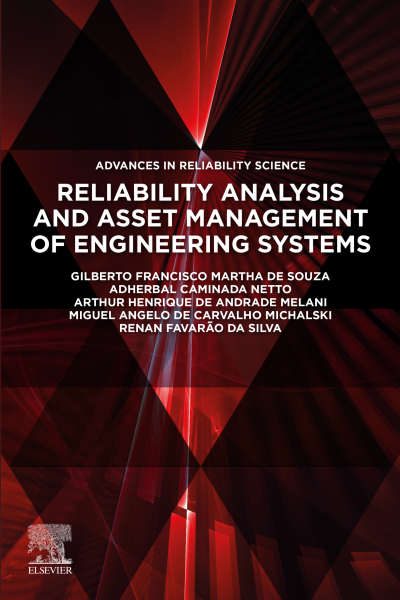
Published by Elsevier in 2022, this book brings together contributions from researchers at the USP Reliability Laboratory to address the latest challenges and solutions in the area of reliability analysis and asset management in engineering systems. The work offers a comprehensive and detailed approach, integrating fundamental concepts and advanced methods for fault diagnosis, prognosis, risk assessment and maintenance planning, with a focus on practical application in complex industrial systems.
With chapters that explore everything from the fundamentals of reliability to real-world examples of applications in sectors such as energy and transportation, the book highlights the use of artificial intelligence and other emerging technologies to improve the safety, efficiency and availability of engineering systems.
Intended for engineers, researchers and asset managers, this publication serves as an essential reference for those seeking to align technological innovation and best practices in reliability, contributing to digital transformation and sustainability in modern industry.
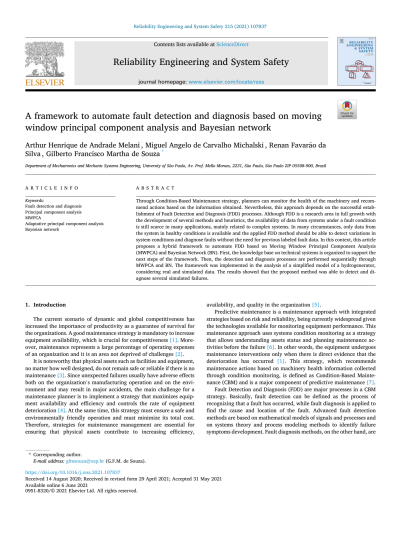
Published in the journal Reliability Engineering and System Safety in 2021, this paper presents a hybrid framework to automate fault detection and diagnosis in complex systems. Using moving window principal component analysis (MWPCA) and Bayesian networks (BN), the method combines historical data and real-time monitoring to detect and diagnose faults, even in dynamic systems or with limited data.
The study validates the methodology with a simplified hydrogenerator model, demonstrating its effectiveness in identifying incipient faults and its ability to support condition-based maintenance management. This work highlights the importance of hybrid approaches in advancing predictive maintenance strategies, contributing to improving reliability and reducing operating costs in strategic industries.
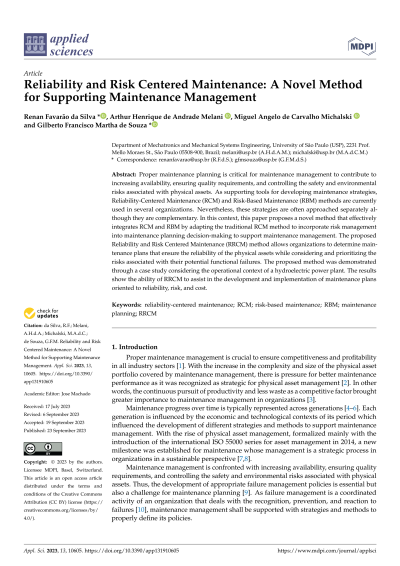
Published in the journal Applied Sciences in 2023, this article presents an innovative method that integrates reliability-centered maintenance (RCM) and risk-based maintenance (RBM) strategies. The proposal, called Reliability and Risk Centered Maintenance (RRCM), adapts traditional methods to incorporate risk assessment into maintenance planning, enabling the creation of plans that balance reliability, cost, and operational safety.
The effectiveness of the method was demonstrated in a case study applied to a hydroelectric power plant, highlighting its ability to prioritize critical failures, reduce risks, and optimize asset management. This work contributes significantly to the evolution of maintenance practices, combining technology and strategic management to face the challenges of increasing complexity in industrial systems.
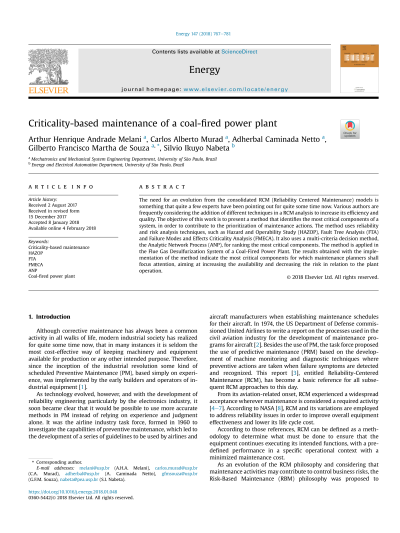
Published in the journal Energy in 2018, this article presents an innovative method for identifying the most critical components of industrial systems, with the aim of prioritizing maintenance actions. Using reliability and risk analysis techniques, the method integrates tools for assessing failures and operational impact, contributing to improving the availability and safety of industrial plants.
The study was applied to the gas desulfurization system of a coal-fired power plant, demonstrating the effectiveness of the methodology in reducing risks and optimizing asset management. This work highlights the importance of reliability-based approaches to improving the efficiency and sustainability of complex industrial operations.
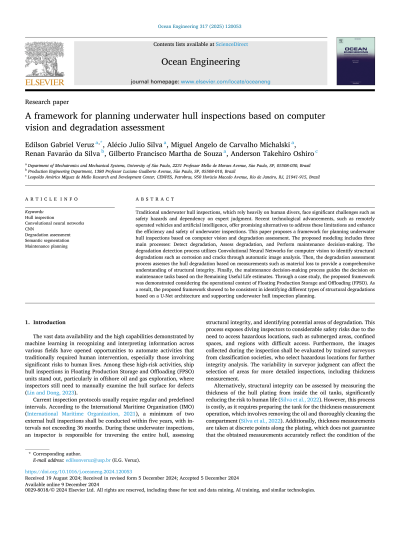
Published in the journal Ocean Engineering in 2025, this paper presents an innovative framework for planning underwater inspections of vessel hulls. The proposal combines computer vision and degradation assessment to identify and quantify flaws, such as corrosion and cracks, using advanced machine learning techniques. The framework includes processes for degradation detection, structural condition assessment, and maintenance decision-making support based on the remaining useful life (RUL) estimate.
The study highlights the practical application of this methodology in a floating production, storage, and offloading (FPSO) scenario, demonstrating its effectiveness in improving the accuracy and safety of underwater inspections. This approach represents a significant advance in structural integrity management, reducing the need for manual inspections and improving maintenance planning based on the actual condition of the equipment.

Published in the ASCE-ASME Journal of Risk and Uncertainty in Engineering Systems, Part B: Mechanical Engineering, in 2024, this paper presents a detailed analysis of the reliability and availability of centralized offshore power generation systems, known as Power Hubs. Using Generalized Stochastic Petri Nets (GSPNs), the study evaluates different operational configurations of these systems, comparing them with traditional approaches to platform power generation.
The results show that, depending on the configuration, Power Hubs can achieve an average availability close to 100%, even in periods of high oil and gas production demand. The paper contributes significantly to the literature by offering an approach that balances energy efficiency, CO2 emissions reduction, and operational reliability, presenting a promising solution for the sustainability and performance of offshore operations.
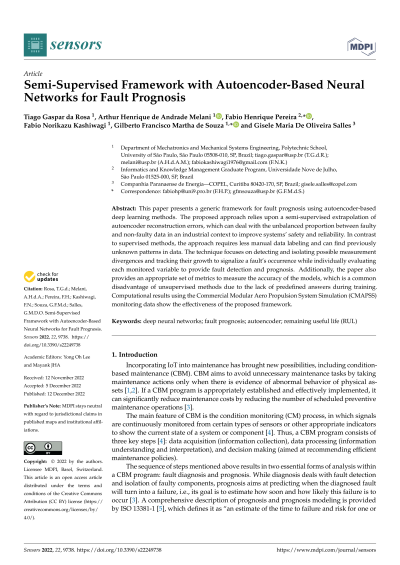
Published in the journal Sensors in 2022, this paper presents a semi-supervised framework for fault detection and prognosis using autoencoder-based neural networks. The approach stands out for dealing with imbalanced industrial data, allowing the identification of unknown patterns and the prediction of faults with greater reliability, even in scenarios with little manual data labeling.
The study validates the method with data from the CMAPSS simulator, widely used in the aerospace industry, demonstrating its effectiveness in early fault identification and remaining useful life (RUL) prediction. This work contributes to the advancement of predictive maintenance strategies, offering a robust and scalable solution for complex industrial applications.
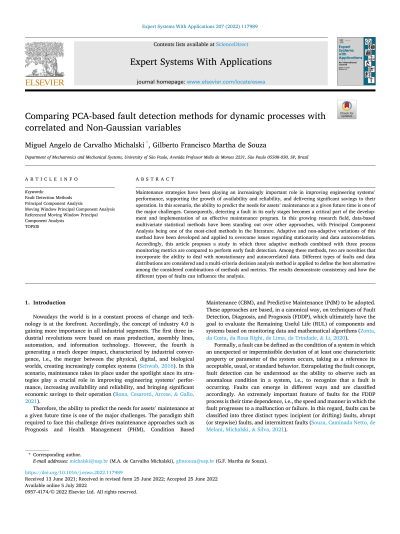
Published in the journal Expert Systems with Applications in 2022, this paper investigates fault detection methods based on Principal Component Analysis (PCA) applied to dynamic processes with correlated and non-Gaussian variables. The study compares three adaptive approaches, including two innovative methodologies that deal with non-stationary and autocorrelated data.
The results highlight the effectiveness of these approaches in early fault detection in dynamic systems and the influence of fault characteristics on the performance of the methods. This work provides an insightful analysis on the application of multivariate statistical techniques in complex industrial scenarios, contributing to the advancement of predictive maintenance and asset management strategies.
Laboratório de Confiabilidade – Relab
Av. Professor Mello Moraes, 2231
Butantã, São Paulo – SP, 05508-030
